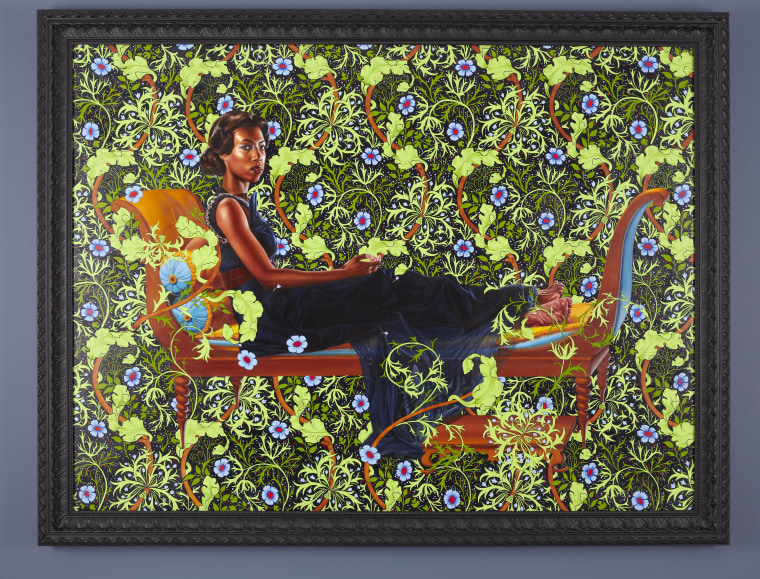Whether its black men adorned in hip-hop aesthetics against baroque or rococo patterns, or black women adorned in custom-made couture gowns against rich floral backdrops, the subjects found in the Brooklyn Museum retrospective “Kehinde Wiley: A New Republic,” are meant to make a statement.
Growing up in South-Central Los Angeles in the 1980s, Wiley was exposed to an environment of violence and poverty. Without his father being present, his strong-willed mother, Freddie Mae Wiley maintained a strict household for her six children, including Wiley’s twin brother. One of her methods for keeping Wiley away from the streets was by enrolling him in a free art course. At the age of 11, his perception of the world began to broaden and deepen as he tapped into his innate artistic talents. From there he discovered his first muse: himself. Conducting self-portraiture and painting the body allowed him to hone his skills and he further developed them at the San Francisco Art Institute and Yale. In 2001 he arrived in New York as an artist-in-residence at the Studio Museum in Harlem.
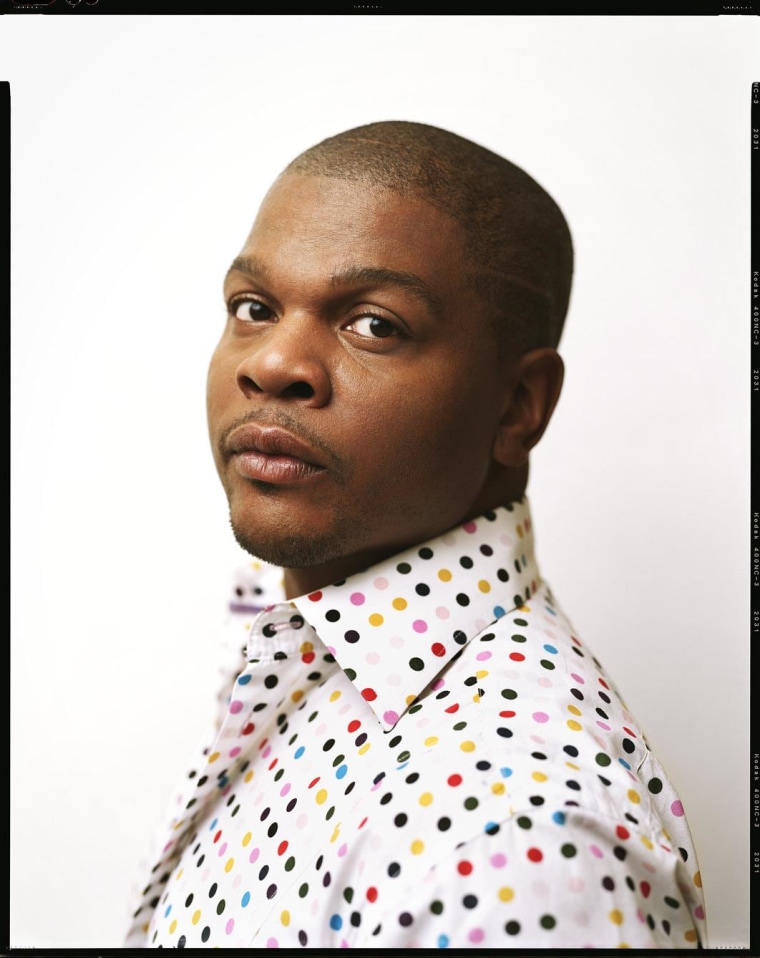
Now at the age of 37, Wiley is considered one of the master painters of his generation. His work can be seen on the hit Fox TV series, “Empire,” and is in the public collections of numerous institutions coast-to-coast from New York City’s Metropolitan Museum of Art to The Hammer Museum in Los Angeles. In January, the State Department bestowed on him a Medal of Arts.
Kehinde Wiley asserts the emergence of a new cultural narrative by reimagining the works of old masters and replacing European aristocrats with contemporary black individuals. Thereby, he implores the viewer to question assumptions across lines of race, gender, class, sexuality, and ideals of beauty. But for the viewer another series of questions often emerges: Who are these subjects? Where do they come from? What is their life story?
To answer these questions it is only appropriate to begin in full disclosure with myself. Nearly a decade ago I modeled for Wiley in a work currently on view at the Brooklyn Museum titled “After Memling’s Portrait of a Man in a Red Hat.” I am Souleo, a human being who identifies as a gay black male, writer, and curator. I was born in New York City. And my life story, well that’s for another article.
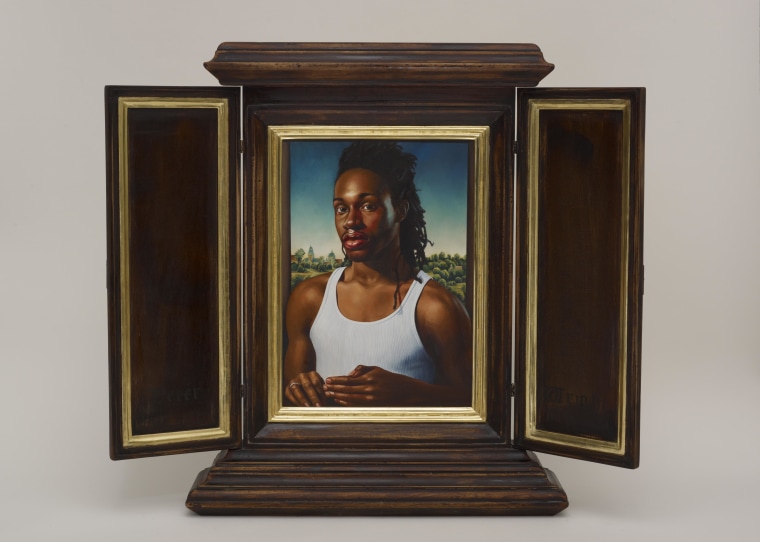
But like numerous viewers I’ve always been intrigued by Wiley’s muses—many of whom he often finds on the streets of cities from New York to Nigeria—and wanted to learn more about these anonymous individuals placed on a world stage through visual art.
Recently I had the opportunity to speak with four of Wiley’s muses: Ena Johnson, Adewale Adekanbi, Khalidiah Asante, and Clevins Browne. Like the portraits they appear in, their reflections run the gamut from slightly humorous, to bittersweet, to inspiring.
Ena Johnson
Age: 25
Residence: Bronx, NY
Occupation: Nursing student and founder of WildRabbitShop.com
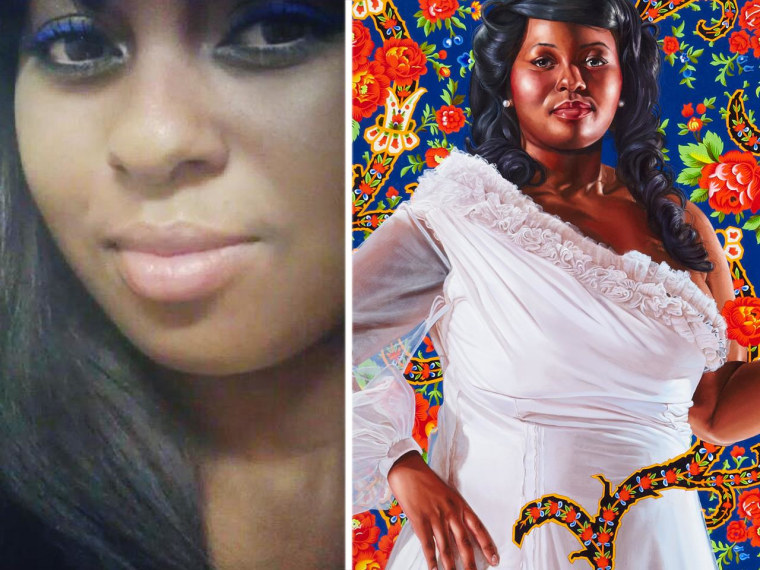
I heard that you had a slight wardrobe malfunction in your haute-couture gown designed by Ricardo Tisci at Givenchy that you wore for your portrait. What happened?
Ena: We were completely measured but mine didn’t fit. My bust is big so I had to be clipped up. Kehinde was really disappointed. He apologized so much and said ‘I hope you still want to do it,’ and I went on with it. Despite that it was like a dream come true.
So you’d gladly do it all over again.
Ena: Yes, because these paintings are an amazing testament to the strength and beauty of black people. I am very conscious of racism and how we are looked at. In these paintings it is refreshing how we are portrayed and something that should be done more.
Adewale Adekanbi
Age: 30
Residence: Bronx, NY
Occupation: Co-founder of Out & About NYC Magazine

You were homeless prior to modeling for Kehinde Wiley. That is a very vulnerable place to be in. Did the portrait help give you a sense of strength and confidence?
Adewale: Before I met Kehinde I was homeless for about two years. I didn’t get along with my father. I was trying to live my American dream and we didn’t see eye-to-eye. I left home at the age of twenty going on twenty-one. When I met Kehinde I was no longer homeless but still had the sense of being homeless because I wasn’t financially stable. I had just moved in with my uncle and I was not used to being in a bed of my own. Being part of this portrait made me feel special. It made me not give up on hope.
You and Kehinde both have connections to Nigeria. His father is Nigerian and so is your family. How does the African ancestry you both share impact the way you view his work?
Adewale: It means a lot to me that he is African by ancestry but born in America and I am the same as well. We are considered exotic but I don’t think we are exotic. We are just a self-made creation of what strength means. Kehinde makes that visible by using African prints as backdrops in some of his paintings. He makes us look even more artistic to the common eye.
Khalidiah Asante
Age: 28
Residence: Bronx, NY
Occupation: Teaching artist and esthetician
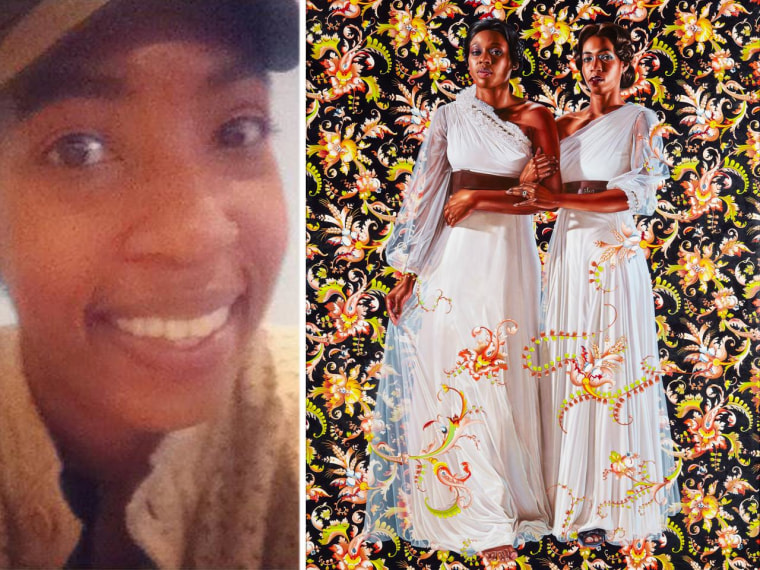
In “The Two Sisters” you are presented with your ex-girlfriend, Dacia Carter. Is it bittersweet for you to now view this painting that marks the end of your relationship?
Khalidiah: Emotionally it is a bit overwhelming. That photo shoot was the last time I was with her as a couple. I look and think of a time I was young and involved in my first relationship with someone who was very similar to me in ways. We were both very shy and socially awkward people but we were really each other's main support system and bodyguard from the world. I protected her and vice versa. We were each other's everything at the time. I think that's evident in the painting. But I've found an even better support system now and I am very happy. And I always wish the best for Dacia.
What’s the story behind the ring you’re wearing in the portrait? Does it belong to you?
Khalidiah: I lost that ring after the shoot. I had it for six or seven years. The ring is something I gifted myself and you get sentimental about things like that. It represents femininity, prosperity and energy. I always wore it. For me the portrait represents two things I lost and new beginnings.
Clevins Browne
Age: 26
Residence: Brooklyn, NY
Occupation: Student, Brooklyn College

Did you have a connection to art prior to modeling for the portrait?
Clevins: I identify as an artist. For a lot of artists they went through something in life that transforms them into an artist. Personally my mother and I grew up homeless and in shelters bouncing from place to place from the time I was four until eighteen. I didn’t have toys but my artistic imagination kept me going. I had this desire to act out and have the world be my stage and use my imagination to pretend I wasn’t a poor kid anymore. In this piece I was able to see I could be whomever I want.
What do you want people to see, feel or understand when they look at your portrait?
Clevins: I want people to see someone who went from being homeless to living a dream. I want others currently going through homelessness to not let it be a crutch. Let it be your motivation.
